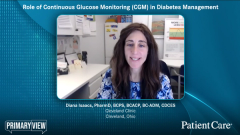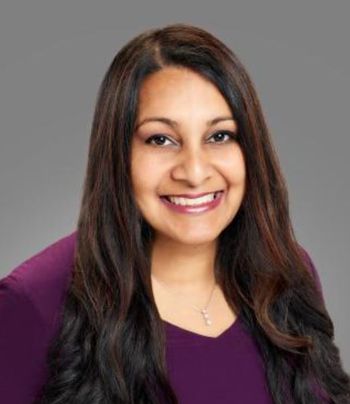
Unmet Needs in Diabetes Management
Dr Diana Isaacs provides insight on current challenges in the clinical treatment of patients with diabetes and shares clinical pearls for the use of CGMs in disease management.
Episodes in this series
Diana Isaacs, PharmD, BCPS, BCACP, BC-ADM, CDCES: Despite all of the amazing advancements that we have had in the CGM [continuous glucose monitor] space, there are still some unmet needs in research and clinical treatment. I do a lot of management in pregnancy, and we lack clinical studies in pregnant women with preexisting type 2 diabetes or true gestational diabetes, where women develop diabetes during their pregnancy. We just got a grant to study Dexcom in pregnant women with gestational diabetes. We need more information in this space. There was a randomized control trial done in women with type 1 diabetes and we have recommendations for the target range, which in pregnancy is 63 to 140 mg/dL, but we lack guidance outside of that for type 2 and gestational diabetes in pregnancy.
It would also be valuable to collect more information on the use of CGM and the outcomes in people with type 2 diabetes who aren’t taking insulin. There’s a bunch of research being done in this area that has shown some impressive reductions in A1C [glycated hemoglobin], but we lack strong randomized control trial data in this population. Last year, we had the MOBILE study, which studied type 2 diabetes on only basal insulin and showed an impressive A1C reduction in that population. I’d like to see more on the complete non-insulin users.
The other area where we need more research or best practices is the implementation of CGM. Many of us are sold on CGM being a great tool. It’s going to benefit our patients and the costs are coming down to make it more affordable for more people. However, how does a busy practice suddenly implement this tool? How do they download the devices? Who’s going to review it? How do they get their team up to speed on reviewing these reports that look different from typical glucose meter readings? We need more of that so we can efficiently get this into practices across the country and world.
As the landscape changes, my advice for people who are trying to use CGM to manage their patient population with diabetes is to just use it. Don’t be afraid of it. Because it’s here and it’s an excellent tool that’s likely going to become the standard of care. It already is becoming the standard of care, but I strongly believe that one day it’s just going to replace glucose meters, like how meters replaced urine.
The next step is to embrace it and learn about it and figure out how we can best adopt it and bring it to the practice. The best way to do that is to utilize and lean on members of the team. We understand that people in practice who are seeing patients every day are busy. I know because I see patients every day. That’s my primary role. I see so many people around me getting burned out because they’re asked to do more and more. There are more messages. You’re going to start getting patients messaging you saying, “I got this alert. What does this mean?” It’s important to have a plan in place for working with that.
Fortunately, there are a lot of people who want to be technology champions. When you think about the diabetes care and education specialist or the pharmacist, dietician, nurses, or your MAs [medical assistants], who on your team can you utilize who’s interested in this space and wants to develop more expertise that can help you? I’d encourage you to think about that and not think of this as 1 extra thing that feels like a huge burden, because it’s not. This will help you as long as you have a plan in place to implement it.
I want to thank you all so much for watching this Endocrinology Network® Patient Care® presentation. We hope that you found this presentation to be rich and informative.
Transcript Edited for Clarity
Newsletter
Enhance your clinical practice with the Patient Care newsletter, offering the latest evidence-based guidelines, diagnostic insights, and treatment strategies for primary care physicians.

















































































































































































































































































